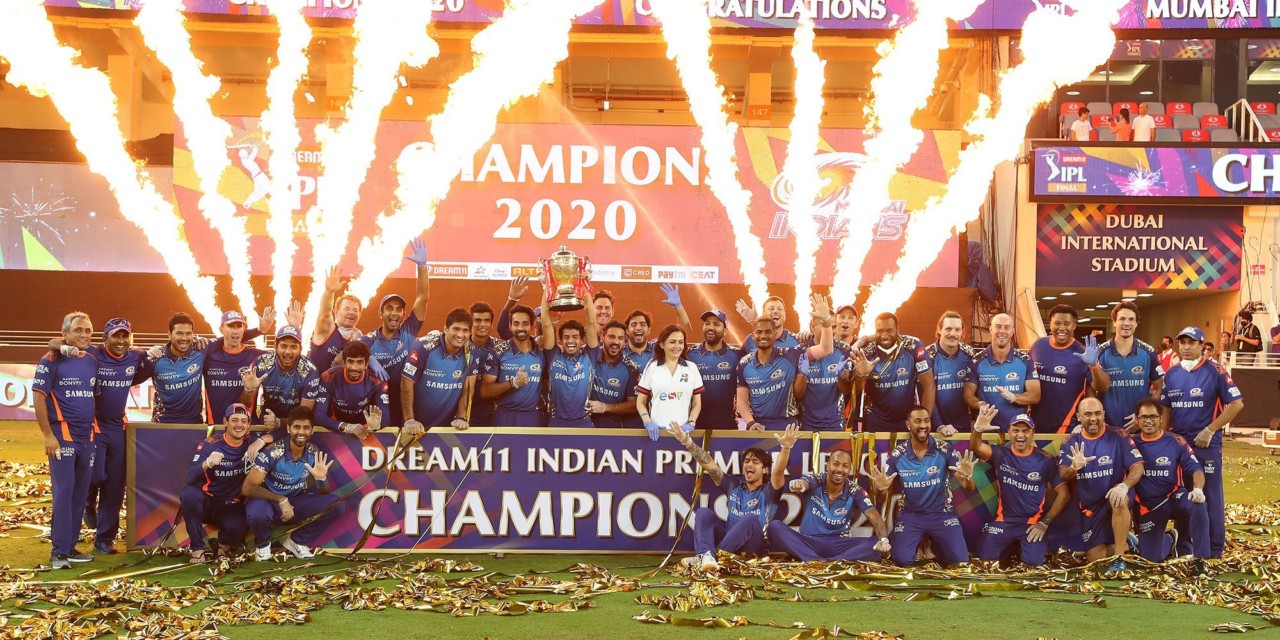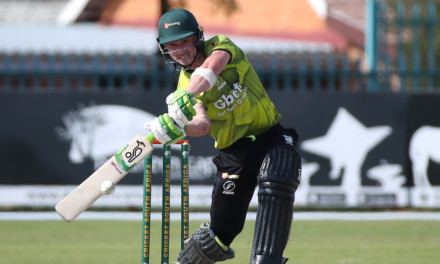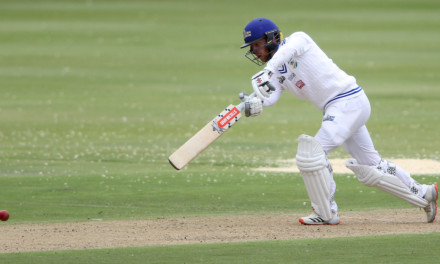The Mumbai Indians won the Indian Premier League. Again. Chasing 157 against the Delhi Capitals, the Mumbai Indians delivered, yet another, clinical victory to clinch their fifth IPL title in eight years.
ALSO READ: Sharma outshines Iyer as Mumbai Indians defend IPL crown
With the 13th edition of the IPL coming to a close, we can now reflect on the quality of cricket played, and discuss some of the standout South African performances fans have been privileged to witness this year.
Before we dive into the key performances from this year’s IPL, let us review the circumstances under which the tournament was played and ground conditions that teams would face.
The high caseload of COVID-19 in India compelled the Board of Control for Cricket in India (BCCI) to move the IPL to the United Arab Emirates, where games would be played in empty stadiums in Dubai, Abu Dhabi, and Sharjah. Back in 2014 as well, the Indian general elections led to the first half of the IPL to be played in the UAE.
The pitches, given what we had seen in 2014, were expected to be low and slow, with spinners envisaged to be integral to the success of a team. From the first game, however, it was evident that curators had left a fair bit of grass cover to ensure pitches would provide a fine balance between bat and ball.
In Abu Dhabi, for instance, the pitch on which the Eliminator between the Royal Challengers Bangalore and Sunrisers Hyderabad was played, the average score through the tournament was 140.
In Qualifier 2 between the Delhi Capitals and Sunrisers Hyderabad, the average score on another pitch in Abu Dhabi was 180. The varying par scores on different pitches on the same ground are indicative of how teams have had to constantly adapt to the conditions on the day.
Additionally, teams were unsure of the presence of dew on a particular day, proving that teams that had all bases covered – consistent top-order runs, middle overs power-hitting, quality spinners, and incisive fast bowlers – would be most successful this tournament. Therefore, it is hardly surprising that the Mumbai Indians, as legendary Indian cricketer and commentator, Sunil Gavaskar, said were “head and shoulders above the other teams.”
Despite the dominance of the Mumbai Indians, this IPL was the most competitive that has ever been played. The teams that did not qualify for the playoffs had gathered 12 points from six wins. RCB, at 14 points, won seven games and made it to the playoffs.
This is illustrative of the fact that T20 cricket is a game of fine margins, and had any of the bottom four teams won at least one more of the tight games they lost, they would have been able to qualify for the playoffs.
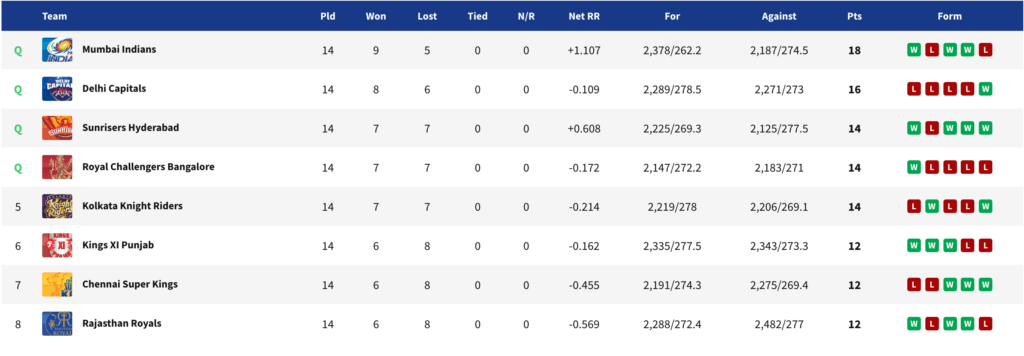
Every edition of the IPL is an opportunity for players to showcase their brilliance in one of the world’s most competitive T20 leagues. This year was no different. From Faf du Plessis’ match-winning 58* in the opening game to Quinton de Kock, Kagiso Rabada, and Anrich Nortje’s performances in the final, South African cricketers made significant contributions to the high standard of cricket played throughout this season of the IPL.
Each year, fans are accustomed to watching at least a couple of knocks off AB de Villiers’ willow that spotlight his superhuman batting prowess. We were treated to De Villiers’ genius this year as well. In the 15 games he played, he scored 454 runs at an average of 45.4, with five scores of 50 and above.
De Villiers’ innings against the Rajasthan Royals when the Royal Challengers Bangalore required 35 off the last two overs was a herculean effort. Snatching a victory from the jaws of defeat was a testament to the brilliance De Villiers could still produce, despite his shock retirement from international cricket two years ago.
ALSO WATCH: AB DE VILLIERS HOLDS HIS NERVE TO SMASH RCB HOME
Over the last decade, De Villiers spent at the Royal Challengers Bangalore, the team’s success has depended largely on De Villiers’ and Virat Kohli’s performances. For de Villiers to produce consistent match-winning performances while shouldering the pressure of the entire batting unit is evidence of his mental strength and self-belief.
This year, we also witnessed De Villiers taking on the team’s wicket-keeping responsibility. In the past, back injuries had prevented him from becoming a regular wicket-keeper. De Villiers behind the stumps may have helped the team balance to a certain degree, but the management may need to reflect on this decision because a number of relatively easy outfield catches going down this season meant that games the Royal Challengers Bangalore should have won were lost to ordinary fielding.
Similarly, Faf du Plessis displayed his all-round brilliance for the Chennai Super Kings through the course of this IPL. Scoring 449 runs in 13 games at an average of 40.81, including four scores exceeding 50, Du Plessis showed, once again, his adaptability and versatility in the T20 format.
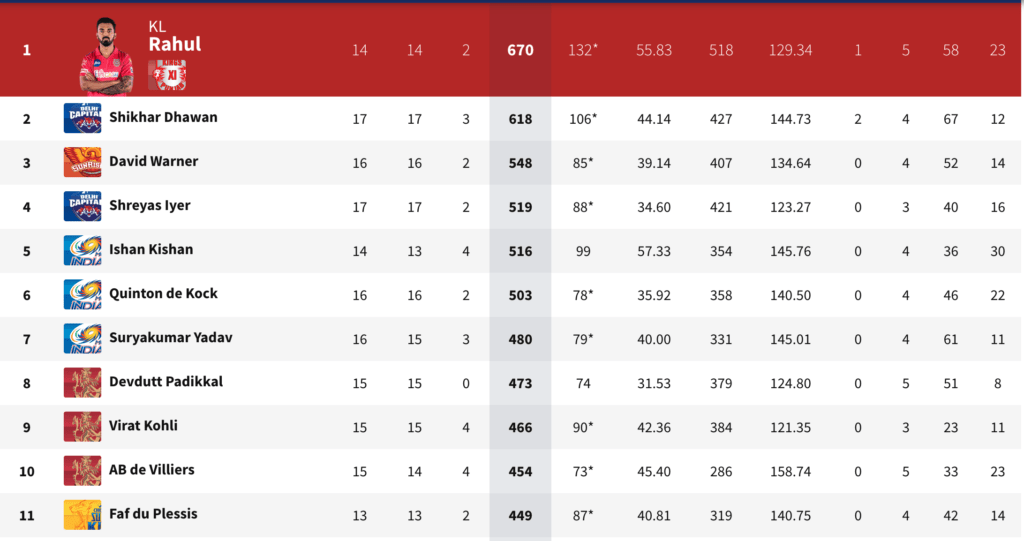
His runs hold significantly more weight than his numbers suggest because he carried the pressure of being the only consistent run-getter for a struggling Chennai Super Kings batting unit. At the end of the first seven games, Du Plessis was averaging 94. The dip in his numbers in subsequent games was the consequence of the team management asking the top order to take more risks in the first six overs. With the rest of the batting order struggling, the onus was on Du Plessis to capitalize on his form and make the most of the powerplay.
His 87* against Kings XI Punjab, in partnership with Shane Watson’s 83*, was among the most dominant batting performances this IPL, taking an under-pressure Chennai Super Kings to a comprehensive ten-wicket victory.
ALSO WATCH: FAF’S 87*(53) BRILLIANCE
In addition to his batting, Du Plessis was, by far, the best fielder this IPL. In an IPL season which saw world-class fielders such as Virat Kohli, Ravindra Jadeja, and Manish Pandey drop fairly easy catches, Du Plessis took every catch that came his way.
He took 12 catches in total, and three catches each in the opener against the Mumbai Indians and a league game against the Royal Challengers Bangalore were instrumental to winning those games. Du Plessis was the only player whose fielding performances determined the outcome of games. As CSK’s social media handles said, “the region between long-off and long on should be named the Faf du Plessis arc.”
ALSO WATCH: FAF DU PLESSIS’ FANTASTIC CATCHES IN IPL OPENER
Quinton de Kock, as part of the powerhouse Mumbai Indians team, also showcased his abilities through the tournament. After an indifferent start to the IPL, mainly due to the lack of match practice and the restrictions of living in a bio-bubble, De Kock soon found his rhythm.
In 15 games, he scored 483 runs at an average of 37.15. His highest score of 78* was a match-winning effort against the Kolkata Knight Riders, and the combination of aggressive strokeplay and percentage cricket saw him take MI home comfortably. In the final against the Delhi Capitals, De Kock’s stunning assault against Kagiso Rabada set the tone for a run chase that the Mumbai Indians would go on to win easily.
ALSO WATCH: DE KOCK SMASHES UNBEATEN 78 OFF 44 BALLS AGAINST KKR
In this season of the IPL and his second season with the Chennai Super Kings, Lungi Ngidi got four games to showcase his talent. In four games, he took nine wickets at an economy rate of 10.43. He was left out of the squad after the first two games owing to the team’s batting concerns and the management struggling to field their best XI.
Ngidi was brought in towards the back end of the tournament and found the rhythm he was searching for. In a conversation with Faf du Plessis, Ngidi said he found this stint of the IPL to be a better learning experience compared to his first season. If retained by the Chennai Super Kings management for future seasons, Ngidi is sure to become the potent and versatile bowler he aspires to be.
ALSO WATCH: LUNGI NGIDI SHOWS EXCELLENT VARIATION FOR 3/39
After a phenomenal IPL last year, Kagiso Rabada, once again, showed why he was among the world’s best all-format bowlers. In this edition of the IPL, he snapped 30 wickets in 17 games at an economy rate of 8.34. His partnership with Anrich Nortje made the Delhi Capitals the most lethal bowling attack this season.
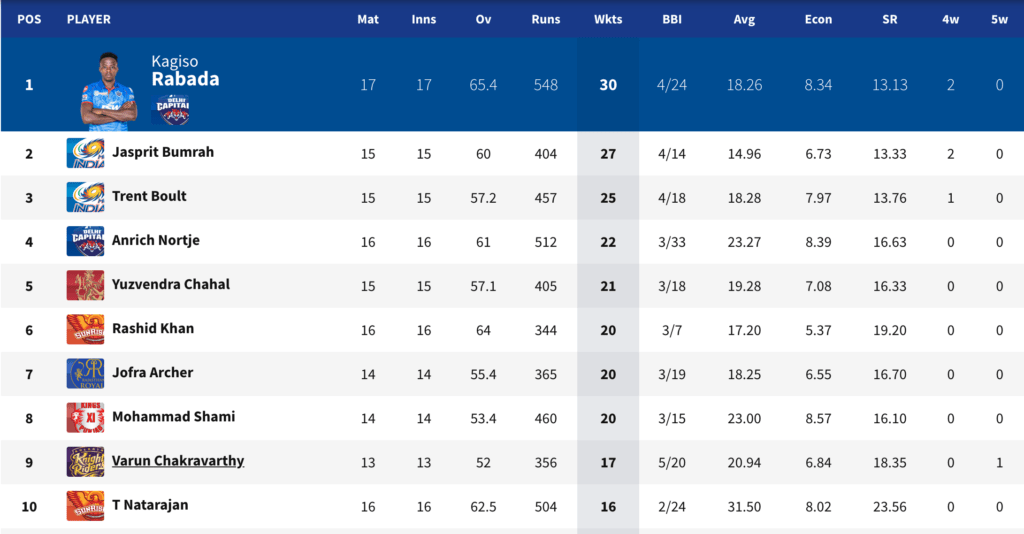
Rabada’s versatility as a new-ball and death bowler has been central to the team’s success this season. The importance of Rabada’s form was clearly highlighted when the Capitals lost four out of their last five games in the league stage, having won seven of their first nine. In the games that the Delhi Capitals lost, Rabada was not at his penetrative best.
Of course, it’s possible that oppositions studied his bowling carefully and executed their plans against him better, but it is evident that Rabada’s success typically resulted in wins for the Capitals. The experience of playing a high-pressure tournament against the world’s best players will hold Rabada in good stead for future IPL tournaments.
ALSO WATCH: KAGISO RABADA’S FIERCE 4/29 TO TAKE DC TO FINAL
Brought in as a replacement for English all-rounder, Chris Woakes, Anrich Nortje’s express pace took the IPL by storm. In 16 games, he took 22 wickets at an economy rate of 8.39. Nortje bowled some of the fastest balls in the history of the IPL.
His over to Jos Buttler, in which he clocked 156.2 km/hr brought back memories of Shoaib Akhtar and Brett Lee rattling opposition batters in the late 90s and early 2000s. Nortje’s partnership with Kagiso Rabada made the Delhi Capitals one of the most potent bowling attacks this IPL.
ALSO WATCH: ANRICH NORTJE’S LETHAL EXPRESS PACE
The marquee overseas all-rounder for the Royal Challengers Bangalore, Chris Morris, delivered noteworthy performances, particularly with the ball. In nine games, Morris picked up 11 wickets at an economy rate of 6.63. Seeing that most teams went after the bowling in the powerplay, Morris’ performance was mighty impressive.
Morris’ bowling should be a relief for the team management, given the team’s struggles with bowling over the years. Morris did not get too many opportunities to display his skills with the bat.
His most significant contribution with the bat was an 8-ball 25 against the Kings XI Punjab. In the next season of the IPL, it would be interesting to see if Morris can be promoted up the order to exploit his power-hitting abilities, seeing that the absence of a finisher cost the team dearly towards the business end of the tournament.
The 13th edition of the IPL has delivered high-quality batting, bowling, and fielding. Despite the lack of match practice, challenges of staying in a bio-bubble for over two months, and playing in empty stadiums, Indian and overseas cricketers put up commendable performances.
Fans of South African cricket should be proud of the contributions that Proteas cricketers made to this tournament. The experience of playing under pressure in one of the world’s most competitive T20 leagues will be sure to help players as they prepare to put on their Proteas jerseys against England and ultimately, in the T20 World Cup expected to be played in India next year.
Photo by: Ron Gaunt / Sportzpics for BCCI

